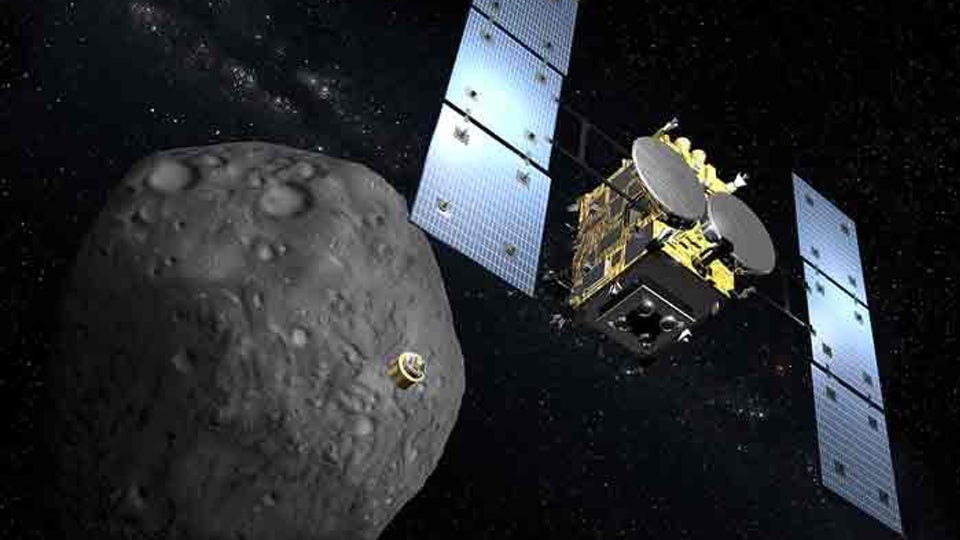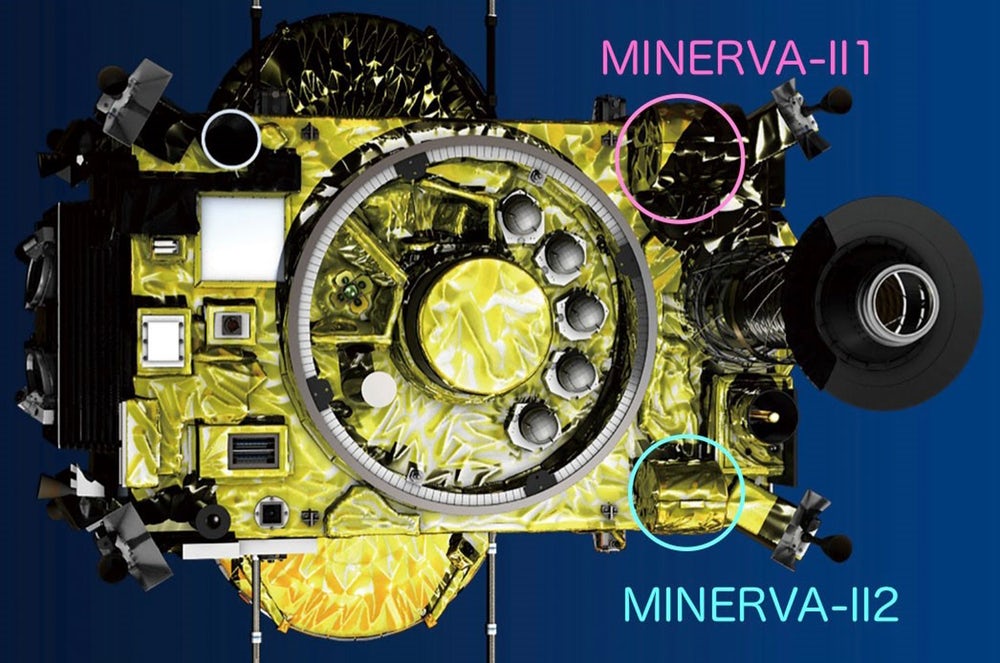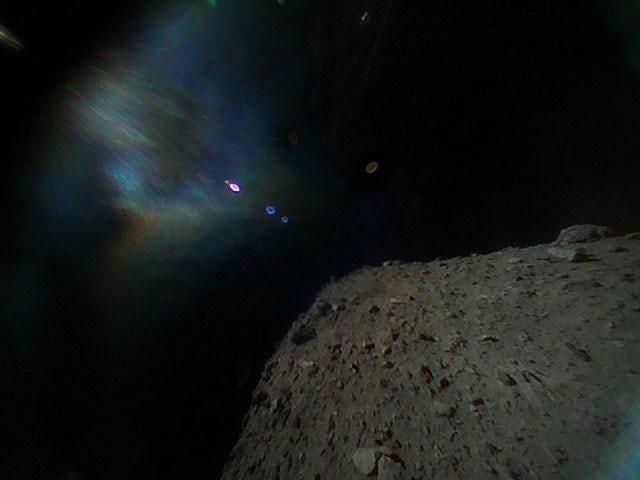
Japan has scored a space race double first by becoming the first nation to land not one, but two rovers on an asteroid. The Japanese Aerospace Exploration Agency (JAXA) has confirmed that both of the robotic MIcro Nano Experimental Robot Vehicle for Asteroid, second generation (MINERVA-II1) spacecraft, designated Rover-1A and 1B, successfully deployed from the unmanned Haybusa2 probe on September 21 at 1:06 pm JST (04:06 GMT), touched down on the asteroid Ryugu, and are sending back images.

Artist’s concept of the Haybusa2 probe (Credit: JAXA)
According to mission control, the two rovers are in good condition and are sending back telemetry as well as images via the mothership. Both were confirmed to have reached the asteroid’s surface and at least one is moving about autonomously in a series of low-gravity hops. Each hop takes about 15 minutes and moves the 18-cm (7 in) diameter, 1.1-kg (2.4-lb) rover about 15 m (50 ft) in distance, allowing it to study different areas of the asteroid.
The images returned by the rovers aren’t the best, since most were taken shortly after separation and show a great deal of blurring and flaring while the tiny spacecraft were maneuvering. However, JAXA says that they will continue to monitor incoming images and data.

Haybusa2 showing the stowage position of the two rovers (Credit: JAXA)
Launched in 2014, Haybusa2 is the second of JAXA’s Haybusa asteroid exploration missions. The orbiter is scheduled to spend 18 months on station during which is will not only carry out observations and act as a relay for the MINERVA-II1 spacecraft, but it will also fire a 2-kg (4.4-lb) copper projectile into the surface to create an artificial crater from which it will take samples for return to Earth in late 2020.

Ryugu as seen from a rover (Credit: JAXA)
“Although I was disappointed with the blurred image that first came from the rover, it was good to be able to capture this shot as it was recorded by the rover as the Hayabusa2 spacecraft is shown,” says Hayabusa2 project lead Tetsuo Yoshimitsu. “Moreover, with the image taken during the hop on the asteroid surface, I was able to confirm the effectiveness of this movement mechanism on the small celestial body and see the result of many years of research.”
(Source: JAXA by way of New Atlas, and for additional photos see: https://newatlas.com/asteroid-landing-hayabusa-japan-ryugu/56461/)






